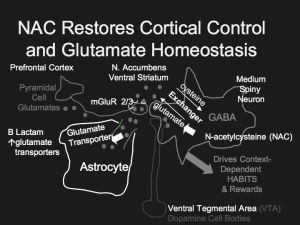Using the Memory Reconsolidation Window to Extinguish Drug Craving and Use
In last week’s article we discussed how fearful memories can be changed during the window in which they are reconsolidated (5 minutes to 1 hour after active recall of the long-term memory). Now the memory reconsolidation window has been used in animals and people to extinguish an addiction to cocaine or heroin. The results in humans were reported by Xue et al. in the journal Science in April 2012.
In a typical recovery scenario, a cocaine addict is repeatedly presented cocaine cues (such as paraphernalia) without the delivery of cocaine, and craving for cocaine becomes extinguished. While the patient stops craving the drug, some biological signs of the addiction remain, such as autonomic hyper-reactivity (e.g. changes in skin conductance, pulse, or blood pressure) in response to the cocaine cues. When the sober cocaine addict leaves the recovery program, he may believe he is no longer subject to cocaine craving even upon the sight of cocaine-related cues, but this craving can return spontaneously or be reactivated by cocaine-related environments or friends who were also users, and he typically relapses.
In order to make the extinction learning more powerful, it must be experienced during the reconsolidation window. In the animal experiments by Xue et al., rodents were trained to press a lever to receive an injection of cocaine or heroin. In the extinction process, the animals were returned for 15 minutes to the same environment where they had learned to press the lever and receive the drug. This was meant to activate memories associated with the drug. Then, after a 10-minute waiting period, a 180-minute extinction training was given. The process was repeated daily for 14 days and resulted in almost complete absence of relapse to drug use with passage of time (spontaneous recovery), exposure to the drug (reinstatement), or exposure to the drug-associated environment (renewal). Moreover, the expected changes in heart rate and blood pressure upon re-exposure to the drug cues were also fully extinguished. Extinction training that began one hour after activation of the memory was also successful.
When the same extinction training was given 6 hours after placing the animal in the drug administration environment, the animal remained prone to drug re-instatement and relapse in the same or different environments or spontaneously. It can be presumed that this occurred because the extinction training took place after the reconsolidation window had closed.
These well-controlled data with both cocaine and heroin self-administration in animals were then taken to the clinic to test their validity in humans.
The same procedure worked in humans addicted to heroin. Two consecutive days of sixty-minute extinction learning within the reconsolidation window, i.e. starting 10 minutes after a 5-minute retrieval of drug-associated memories by watching a video resulted in amelioration of drug craving for at least 184 days, and amazingly, as in the animals, also resulted in the loss of the unconscious biological reactivity in heart rate and to a lesser extent, blood pressure. Patients did not relapse during 6 months of followup. The same extinction process was unsuccessful when it occurred outside of the reconsolidation window, i.e. 6 hours after retrieving the drug-related memories.
Editor’s Note: These results could be of considerable potential therapeutic value in a variety of psychiatric illnesses. This process is conceptual breakthrough that has great promise for clinical use. Psychiatrists, psychologists, and patients should become familiar with these data and the principles of exploiting the reconsolidation window for potentially transformational results.
How quickly these principles can be incorporated into mainstream psychotherapeutic encounters remains to be seen. However, clinicians should begin to familiarize themselves with these data and concepts so that they can soon be put to use for more effective clinical treatment of psychiatric conditions involving pathological learning, conditioning, and habits.
The N-acetylcysteine Story: A New Potential Therapy for Bipolar Illness and Substance Abuse
N-acetylcysteine (NAC), a readily available substance from health food stores, is able to reestablish glutamate homeostasis (regulation and balance) in the reward area of brain (the nucleus accumbens), reported Peter Kalivas of the University of South Carolina at the “Staging neuropsychiatric disorders: Implications for idiopathogenesis and treatment” meeting in Mojacar, Spain this past November. Kalivas reported that NAC appears to be effective across a spectrum of addictions, including cocaine, heroin, alcohol, cigarette smoking, and gambling.
Even more remarkably, NAC also appears to have positive effects in placebo-controlled studies in the treatment of patients with bipolar illness, report Mike Berk and colleagues, who are studying the same substance in Australia. Compared with placebo, patients taking adjunctive NAC showed improvement in all outcome measures, especially depression, after 3 and 6 months. In another article, also published in Biological Psychiatry in 2008, Berk’s research group demonstrated that NAC improved some negative symptoms of schizophrenia. NAC has also shown positive effects in trichotillomania and on nail-biting, suggesting that it has a variety of potential clinical uses in conditions associated with pathological compulsive behavioral patterns.



